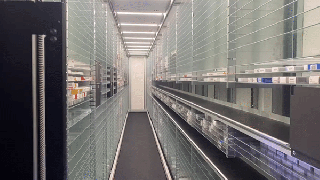
Tijuana became the first city in Mexico to automate the process of filling prescription drugs through the use of robots in some of its pharmacies.
Alberto Castro, an employee at Pey Pharma, praised the innovation as more efficient for pharmacies in Tijuana that serve customers from both sides of the border, with thousands of Americans crossing over daily to stock up on less expensive medications.
"It grabs the product and takes pictures. It captures the lot number, expiration date and dosage," Castro explained at a presentation to showcase one of the BD Rowa robots installed at the pharmacy.
Dispensing robots free up pharmacists and technicians to provide other health care services. The automation will also cut the average wait time for a prescription to be filled by up to 33%.
Get San Diego local news, weather forecasts, sports and lifestyle stories to your inbox. Sign up for NBC San Diego newsletters.
"It was too much work, people were very desperate, they wanted things faster," said Adriana Romero, a pharmaceutical assistant.
Robots scan the prescription, search for medications and dispense pills in a canister. A pharmacists then verifies the medications and delivers it to the patient. The robotic dispensing process reduces the risk of human error and injury.
"Accidents have happened when using the stairs or someone wanting to reach for something," Romero said.
Top Stories
U.S. citizens head south to Mexican clinics and pharmacies seeking lower cost meds and doctors. Medical and pharmacy "tourism" is common phenomenon and a multi-million dollar business for Mexican states south of the border.
"Given the high costs of health insurance in the United States, and because part of the Latino population can't get health insurance in the U.S., they come south of the border to see dentists, ophthalmologists and for medication," said Adrian Marmolejo, manager of NADRO, a pharmaceutical chain, in Tijuana.
People who live in nearby in San Diego and Los Angeles, and as far away as Pennsylvania head to Mexico in search of medication. Officials in Mexico estimate that 40% of customers in pharmacies in Baja California are foreigners, predominately American, buying medication for common conditions like diabetes and hypertension.
And because prescription drugs are now more regulated in Mexico, they are safer as well, and most require a doctor's prescription.
"Before you could come and buy antibiotics as if they were candy, but not today. They are now well regulated, there are large inspections federal health agencies," said Marmolejo.
BD Rowa says automation also adds another layer of protection against abuse because the robot will only dispense with a prescription and fill it with the prescribed amount. prescription amount.



